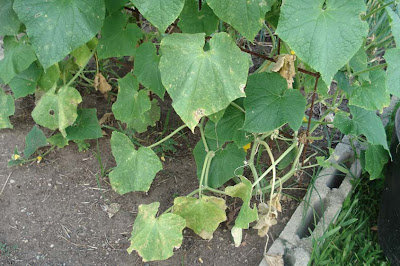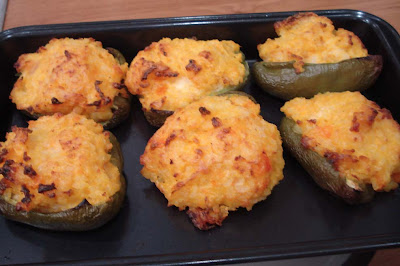We'll start our kitchen table talks today with the topic, chickens in the backyard. I want to encourage you all to get involved in this, learn a useful skill, or contribute to the discussion, just like you would if we were all sitting around a kitchen table with our cups of tea and coffee. This talk is aimed at those folk who have never kept chickens before, want to, but haven't got much of a clue about their care and needs. I hope all of you who have experience with chickens join the table and help pass on the necessary information to the novices. Those of you with no chooks, please add your egg recipes.
I'm still not entirely sure how these talks will go. For the time being, if you want to ask a question, simply write it in the comments and I'll answer what I can or pass it on to our other experienced chook people. If you want to write your own post and show us your chickens, do that and give me the link to your post in my comments. You will have the weekend to add to this. I'll add all the links to my post soon after they turn up and we can all tour around reading what everyone has to say. On Monday morning, I'll do a followup.

The vast majority of chickens are hatched in Spring and Summer. Day old chicks are often available for sale but when I'm getting new chooks, I usually go for point of lay pullets that are between 18 - 22 weeks old. They will start laying a couple of weeks after you buy them. When you buy point of lay pullets, they will have been sexed and you'll get only hens. When you buy day old chicks, they won't have been sexed and you'll get approximately 50/50 girls and boys.
If you intend buying chickens, you need to have their housing ready before you bring them home. You MUST provide safe housing. There are a lot of predators around - dogs, foxes, feral cats and other wildlife that will wander in under the shadow of darkness. When you bring them home, lock the gate on their coop and leave them to settle in. Don't let them out to free range for at least a week - during that time they will learn that is their home. When chooks know their home, they usually come home to roost when the day light starts to fade and usually you don't have to go looking for them.
 This is Margaret Olley, my favourite chook. She's a buff (that's the colour) Sussex.
This is Margaret Olley, my favourite chook. She's a buff (that's the colour) Sussex.Most local authorities will have a bylaw about the keeping of chickens. Where I live we can have up to 20 chooks and the chicken coop must not touch a neighbours fence. Please phone your local county, shire or council to ask about their regulations before you buy your chickens, or Google "chicken regulations ......." and add your town to the Google search, instead of the dots.
Brisbane area regulationsUS regulations.HOUSINGChickens need a place where they feel safe and can lay their eggs. One nest per five chooks. We have four nests here with 11 chickens but we usually have at least one chicken broody and taking up a nest all the time. If the nests are high off the ground, you'll need to provide a little ladder or steps for the chooks to reach the nests.

Click on the photo to enlarge it. This is our set up. We have a hen house with a lockable enclosure attached to it. That is all fenced. There will be times when you need to keep one chook apart from the rest. When that happens, we put them in the lockable area attached to hen house - that is directly behind the lemon tree. When that area is not being used, we make fast compost in there. I'll write about that again another day. You can see the gate to the hen house is open. We close that every night.
Your ladies will sleep on a roost. That is a horizontal bar, like a small tree branch. The higher up the chickens is when they go to sleep, the higher up in the packing order they usually are. Generally your topchook will be up on the top roost at night.
Photos of chicken tractors.Hen houses.How to build a hen house.Info on housing chickens.TEMPERAMENT AND LAYING CAPACITYSome chooks are flighty, some are very placid, but overall, chooks don't cope with stressful situations very well. Here is a
handy guide to chicken breeds - I hope you get pure breed chooks. This chart will also tell you whether the chickens are suited to hot or cold temperatures. We have a mix of Sussex - one buff, one silver, one salmon Faverolles, two Rhode Island Reds, one New Hampshire, two Australorps, one Australorp cross, one buff (the colour) Orpington, and one barred Plymouth Rock.
If you live in a city, you may only be able to find crossbreed chooks like Isa browns. These are a hardy type of chook bred for the caged industry. They'll lay well, at the expense of going broody, which a lot of people like. They generally don't live as long as pure bred chooks.
NUMBER OF CHOOKSThe smallest number should be two. Solo chickens are sad birds. However, there will be times when you have to isolate your chooks and keep them on their own, generally chickens prefer to be with other chickens. However, having written that, we used to have a chook called Jewels - a golden Hamburg, who hated being with the other chooks and always sat with the dogs. Your chooks will know the other chooks by sight and when you want to introduce new chooks, the older ones will give them a hard time.
Get the number of chickens you have room for. We have 11 here and we get about 8 eggs a day. A little flock of three or five girls will give enough eggs for a family of four or six.
INTRODUCING NEW CHOOKS TO AN OLDER FLOCKWhen you bring new chooks home, and you already have chickens, isolate the new birds, but put them where they can see and be seen by the other chooks. Keep them isolated for a few days. This will help them assimilate and when you let them out together, there will be less pecking.
PECKING ORDERPecking each other to establish pecking order is natural behaviour for chickens. Don't intervene unless you can see an open wound or blood. Then you'll have to remove that chicken until she has healed. Chickens can be vicious if they see blood.
LIFESPANFrom my experience, about ten years, give or take. Cross breed chooks, generally eight years. They will continue to lay eggs up until they die but when they're very old, you will only get about one egg per two months.
We have found over the years, that if you get a flock of say eight or ten girls, in five years you'll have maybe six or seven.
FOOD AND WATERChooks must have clean water ALL THE TIME. Get into the habit of giving them clean water every second day, or daily if they drink a lot. If you have bought day old chicks, they're need chicken starter crumbles, if you have point of lays they'll need laying pellets or laying mash (mash is a combination of grains). Or you can
make your own mix. If you intend to supplement their diet with greens from the garden, or kitchen scraps, start this early as they get picky later and will stay with what they know. Chickens are omnivores, they eat meat, grains and vegetables. They love cheese, yoghurt, whey, sour milk and milk. They need a high protein diet to produce eggs constantly, if you have chickens that aren't laying give them a boost with some day old bread soaked in milk or porridge made with milk. They love this and will see it as a treat.
If you have grain like wheat or barley, sprouting it for the chickens gives them a good nutritional boost. Simply soak the grains for a couple of hours in a large flat container, or upturned bin lid, pour off the excess water and keep the container in the shade, covered with a cloth. Wet and rinse the grains every day and drain off the excess water. When the grains sprout, feed them to the chooks.
This is good natural supplement to help keep the hens' calcium level up. Either buy shell grit (at your local feed store where you buy chook food) or keep the shells of your own eggs and wash them out so they don't smell. When you have quite a few, put them in the oven, on a medium setting, for 10 minutes to dry out. When they're cool, put them in a blender and blitz them, or crush them inside a tea towel with your rolling pin. Store in a jar. The crushed shell powder can be added to the chook food as a calcium supplement.
Your chickens will be healthier and will give you better eggs if you let them free range. When chooks eat grass, they will have Omega 3 oils in their eggs, this is a great bonus for you and anyone eating the eggs.
Another little thing to keep your chooks healthy is to add some "real" raspberry cordial, with at least 25% real juice, or squashed frozen raspberries or jam to their water every so often.
Read about it here. This is also a good treatment for diarrhoea (in chooks and kids).
Raspberry Cordial recipe2 cups crushed fresh or frozen raspberries
Juice of one lemon
1½ cups sugar syrup
8 cups of water
Bring to the boil and simmer for five minutes. Cool, then decant to clean bottles. Store in the fridge for up to two months or freeze.
To a bucket of water, add about two tablespoons.
EGGSYou will know your ladies are maturing by their comb and wattles - the red bits on their faces. The comb and wattles will get larger and redder as they get close to laying. Depending on the weather, each hen will lay about five eggs a week, in the first year. It will decrease every year after that. They will stop laying when it is very hot or very cold and when they're moulting (replacing their feathers). When your girls first start laying, they might lay an egg with no shell or an egg with two yolks. The eggs usually start off small and get bigger as the hen matures. When the hen's hormones have settled down, you will get one ordinary egg with shell in tact.
Collect the eggs once a day. Your girls will usually lay in the morning. Don't wash the eggs, as that will remove a protective layer on the shell. If the egg is dirty, rub it with a cloth and remove as much dirt as you can. If you still need to wash it do so, but use that egg next. Don't let it sit in the fridge.
Eggs should be stored in the fridge, in an egg holder, so they don't roll around. There will be regulations on selling eggs in most places. We sell our eggs to friends and neighbours for less than they would pay in the shop. We put that money into the feed we buy.
CLEANING THE COOPIf you have a dedicated hen house, it will need to be cleaned out at least every week, depending on the number of chickens you have. Laying straw on the floor will help with the smell in wet weather, this straw can be placed on the compost heap after a couple of weeks. Don't expect your coop to be sparkling clean every day, it is outside and in a natural setting where wind will blow dust in and spiders will spin webs. It does need to be fairly clean and not smelly but it's not your kitchen.
Hanno has attached our roosts to the roof so when he cleans the coop, he simply attaches the roosts to the roof with a clip and can easily clean the floor.
If your chickens have lice - and it will happen from time to time - get some food quality
diamateous earth and this will get rid of them. You can also rub it on the chooks, make sure you rub under their wings and around their comb and wattles. Read about
chicken anatomy here.
BROODY HENSPure breed chooks will go broody. They want to hatch eggs and become mothers, but unless you have a rooster that will not happen. Hens don't need a rooster to lay eggs but they need a rooster to fertilise them. When our chickens go broody, we let them, unless they sit there for too long - over a month - and start losing weight. Generally they'll sit for a couple of weeks, hoping you don't see them, and they'll be in the darkest nest. Just put your hand in and collect the eggs every day as you normally would. If you don't want the chook to sit on the nest, you'll have to lock her our of the nesting area, but even then, she might find another dark place in long grass or in the hay bales and keep sitting. They do no harm sitting, we feel it's best to just let them sit.
 This is Heather, our little French hen. She's a Faverolles - salmon coloured. She is broody almost all the time.
This is Heather, our little French hen. She's a Faverolles - salmon coloured. She is broody almost all the time.You will notice that I've not written about cold weather chickens, I have never kept chickens in a cold climate so I hope that our friends and neighbours in colder areas will write about that on their own blogs and give me their link so we can visit to read what has been written.
Please also write a post on your own blog is you want to add anything or if you do things differently - that's okay. This is just my version of keeping chooks. Again, post the link here so we can all read what you have to say.
I'm sure I've forgotten a few things. If you want to add anything, either comment, or write a post and let me know your link. I'll add all the links to my main post. As readers come through, they can tour around, reading our posts and adding comments as they go. Please use the biggest kitchen table banner if you want to, just click on it and "save as". Adding it to your own post will be a visual sign that you are part of the kitchen table discussion.
If you want to be a part of this, but don't have chickens or know how to keep them, please add your favourite egg recipe and send me your link. I'll include that in with the general mix of this.
Readers, as you read, please add your comments to give feedback and to let the writer know you've visited. Comments encourage posters to write more.
THERE IS MUCH MORE INFORMATION AVAILABLE VIA THE LINKS BELOW. JOINING OUR KITCHEN TABLE ARE...
Darren at
Green Change writes about his
plans for a chicken ark and
where to buy chicken tractors (in NSW). Thanks Darren, you have a great site.
Thanks for the
egg recipe, Emma @ The Berry PatchHomehandymum at
Adventures in Sideways Living has
post and photos here of a chicken dome Linda at
Remote Treechanger hasa photo of her empty chook house and written her
Sausage and Egg Pie recipe here.Chookie from
Chookie's Backyard has written a
backyard chook primer here.
Donetta shows us her
chickens, chook tractor and some recipes at
A Life Uncommon.Yategirl @
Kitchen Garden in the Suburbs joins the table with her
photos of her chook house and chooks. She also writes about chook noise, which is an important piece of info for new chook owners.
Hana has
shared a cake recipe on her blog
Marmota B. Thanks for joining in, Hana.
You can see
25 lovely bugg Orpingtons over at Andi's
To Be Quiet blog.
Amanda shows us
how chickens and small children mix together quite nicely. Amanda's blog is
You Reap What You Sow. How true!
Cyn
shares her experiences with her flock at
Yes Lord. Thanks for joining Cyn.
Leanne from
At the Good Life shared
her story of chooks and her rooster, Rory. It highlights the benefits of keeping a good rooster.
Stacey at
One step at a Time writes that she's not offering much at the table, but I think she is helping build a stronger community AND
she found someone who sells 'traditional and rare breed' Chickens in Wiltshire and
has included plenty of egg recipes hereLinda has some
fabulous photos of her Plymouth Rocks on her blog,
Locust Trail Homestead, including a very handsome rooster. Welcome to the table, Linda!
Tricia at
Little Eco Footprints has posted about
her mixed flock of very pretty chooks. She shows how well a small number of chooks fit well into a small backyard.
If you want to read about breeding chickens and hatching eggs, go to
A Joyful Keeper to
read Joy's very interesting post. Thanks for joining us, Joy!
Cryptstitch has written about her
very unusual white crested black Polish chooks here. Seeing the different varieties of chickens always amazes me.
Shelle from
Brand New Ending promised to write about her little flock of
bantam Rhode Island Reds, and she's done just that right here. It's well worth a visit.
Rose has joined us to tell us about
her rescue chooks, and later, her tiny chicks. Wander over to
Coastal Rose and read about her experiences. Thanks for joining the table, Rose.
Marita at
Moderately Me shows us
a photo of the most Australian of scenes - a chook house next to a fruit tree. Ours is near lemon, Marita's might be a lemon or an orange. Thanks for taking part, Marita!
Nell, I apologise. I did read your comment but forgot to answer it. We don't test our eggs, I don't think there is a regulation to do so here. We've kept chooks for 25 years and have never been sick after eating their eggs.
Lucie from
Touchatou has written a wonderul post, in English and French,
about her chooks and the wonderful winter house her husband built. Thanks for pulling up a chair at the table, Lucie.
There is a long and interesting post from Morgan at
Growing in the Fens about t
heir progression from a few chooks to 43. She's had chooks for eggs and the pot and there's a lot of information there. Thanks for joining in Morgan.
Alecat at
Serenades and Solace has written about
going from a chook dome to a rectangle chook run. There are photos of chooks there as wll as one of a great chook feeder. Thanks for the post, Alecat.
Linda has
a delicious and simple egg recipe at her blog,
Rebel Pigs. Thanks for joining the kitchen table. Linda.
Leanne
At the Good Life, has written about
what she is doing to stop a chook from eating the eggs in the nest. Very interesting. I hope it works, Leanne. Thanks for joining in.
The last post is a wonderful one from Michelle at
You Just Gotta Keep Knittin'. Michelle
writes about the "joys and realities" of keeping chooks. She has some wonderful photos and a great chook house. Thanks for joining the table, Michelle.
And one I missed, sorry Toria. At
Unfinished Business, Toria has written a post about her chooks and ducks. There is information about building chook houses, with links, a book recommendation, photos and a recipe. A very interesting post. Thanks Toria.
Check out Rina's very interesting post at
Into Still Waters about
modifying rooster behaviour . It's well worth a visit.
The Thinker @
Thinkers Rock has written about
how she keeps chooks using the knowledge her grandma gave her.Can anyone help Melanie find pure heritage chickens in eastern Canada?A View from the Green Barn is not officially part of the kitchen table but if you have a wander over there
you'll find a lot of info about chooks, and they have just bought a new fangled automatic egg turner. Crikey!
Totally off subject but, here is some good info about dairy produce.






















































